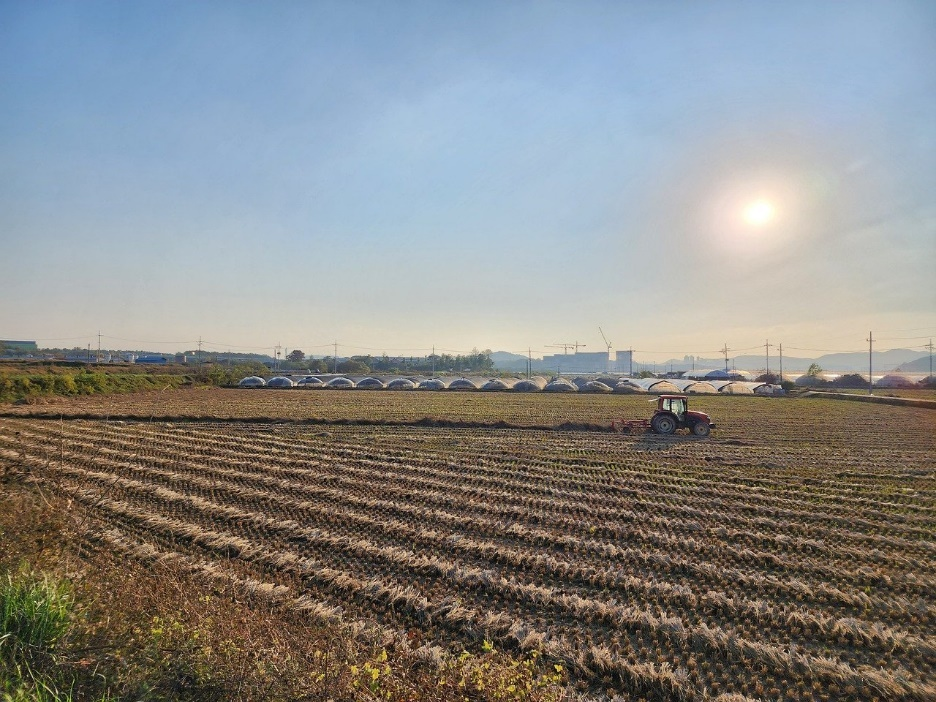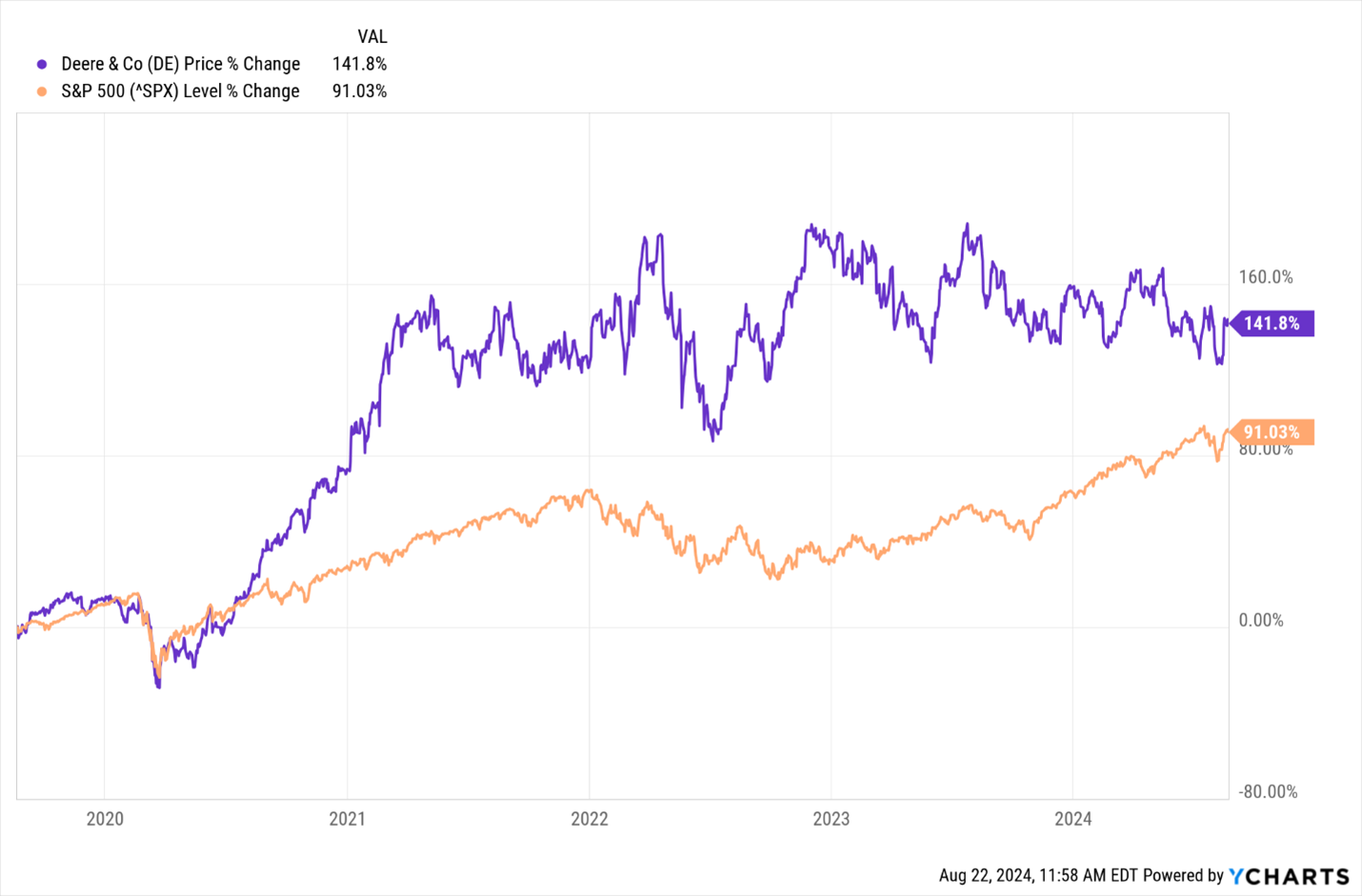Get in on This Unusual Space-Ag Partnership
 |
| By Michael A. Robinson |
At first glance, tractors used on farms throughout the world would seem to have little to do with the New Space Race.
After all, tractors have wheels, not wings. They are decidedly terrestrial, as they help farmers till soil, plant and plow.
And they certainly don’t lift off from big rockets.
No doubt, in today’s tech-centric society, tractors may seem a bit quaint. But when the gas-powered ones first appeared in 1890s, this disruptive ag-tech replaced horses and steam engines.

Fast forward almost a century and a half. Tractors come loaded with, GPS, touchscreens and other fancy tech.
But to run all those sophisticated apps, these tech-heavy tractors also need access to reliable Wi-Fi connections.
And yet, industry experts say that about 30% of farms lie in what amounts to Wi-Fi deserts … often in rural areas, no broadband to speak of.
That’s where Elon Musk’s SpaceX and its Starlink constellation of satellites enters the picture as part of the space economy on pace to be worth $1 trillion.
Using its massive array of low Earth orbit satellites, which move data in near-real-time, Starlink is now working with an agricultural equipment icon.

In exchange, the big ag firm’s end users gain access to reliable broadband that works in rural spots just fine.
Make no mistake. The sat-com portion of the New Space Race is a huge, unstoppable trend.
There are an estimated 9,000 communications satellites in orbit today. A UK government report predicts by 2030, there may well be more than 60,000 in orbit.

And that opens up a number of new opportunities for many industries — “precision agriculture” in particular.
The term refers to using tech to make farming easier and much more profitable.
Here’s how you can get in on some of those profits.
Farming With Elon
This is why I’m so bullish on one of the world’s leading ag and industrial equipment makers, Deere & Co. (DE) … the company behind the John Deere brand.
Earlier this year Deere signed an agreement with Starlink to provide Wi-Fi coverage for Deere’s agricultural machines.
This is a big deal since Deere has a 60% market share of big ag machines in North America.

Its stated goal is to get its precision ag equipment connected to Starlink in the next two years, and then expand out to its other divisions.
That would put over 500 million acres of land on the Starlink network.
Deere has been moving in this direction for a number of years now, adding two divisions in the past seven years that will complement this new partnership.
Blue River Technology, along with Bear Flag Robotics, are precision ag divisions that Deere acquired to help create automated “see and spray” solutions for more effective use of pesticides.
Farmers spend large amounts of money on herbicides, seeds and gas to keep a farm going. And usually, most of those costs are front-loaded into the growing season.
So, the fewer variables in harvesting a healthy crop, the better the bottom line.
Blue River and Bear Flag tech helps target just the weeds, saving time and herbicides for their best use.
Also, by using other databases Deere has developed, multiple machines can be networked allowing for better coordination among the vehicles.
And having better understanding of soil and weather patterns allows for optimizing harvests as well as planting.
From Saw Blades to Precision Ag
This may seem a bit high tech for farming, but few industries can benefit from new technology as directly and as quickly.
Deere has always been an innovator. When John Deere moved to the Midwest in the late 1830s to start a blacksmith shop, he realized that the cast iron plows farmers were using were getting bogged down in the rich soil.
He re-worked a steel saw blade into a new type of plow, and it launched the company we have today.
I’ve been following precision agriculture for a few years now. And as new space-based comms networks have multiplied and gotten significantly more robust, we’re getting a taste of the game-changing opportunities in the way farmers plant, support and harvest crops.
And it’s no surprise Deere is at the forefront of this $150 billion market.
Deere continues to build out its ability to use tech to add value to its customer base and has a plan to deliver its smart systems to all divisions of its equipment.
We’re talking about everything from real-time data to autonomous services to the Internet of Things.
Deere’s goal is to connect 1.5 million of its machines across all its divisions by 2026.
None of its competitors can match this plan’s scope or time frame.
The Future Is Bright
Inflation has hurt margins as equipment sales have slowed due to higher costs for its customer base, much less rising costs on the company’s end.
But Deere’s commitment to tech solutions gives it a very bright runway.
Over the past three years, it has had an average per-share profit growth of 36%. At that rate, profits double about every two years.
Even if we cut that projection in half to be conservative, we could still see a double in four years.
And its two previous quarterly earnings surprised to the upside. The same thing happened again last week when it once again beat on earnings.
Over the past five years, the stock is up about 142%. That beats the returns of the S&P 500 by 50.5%.

It all goes back to what I keep saying, the road to wealth is paved with tech. And that’s becoming increasingly true in modern agriculture.
Best wishes,
Michael A. Robinson
P.S. As you can see, new technologies permeate every industry. The next generation of tech, however, needs to be built upon a sturdy infrastructure. Check out this presentation to see who Nvidia is partnering with to build that infrastructure.

